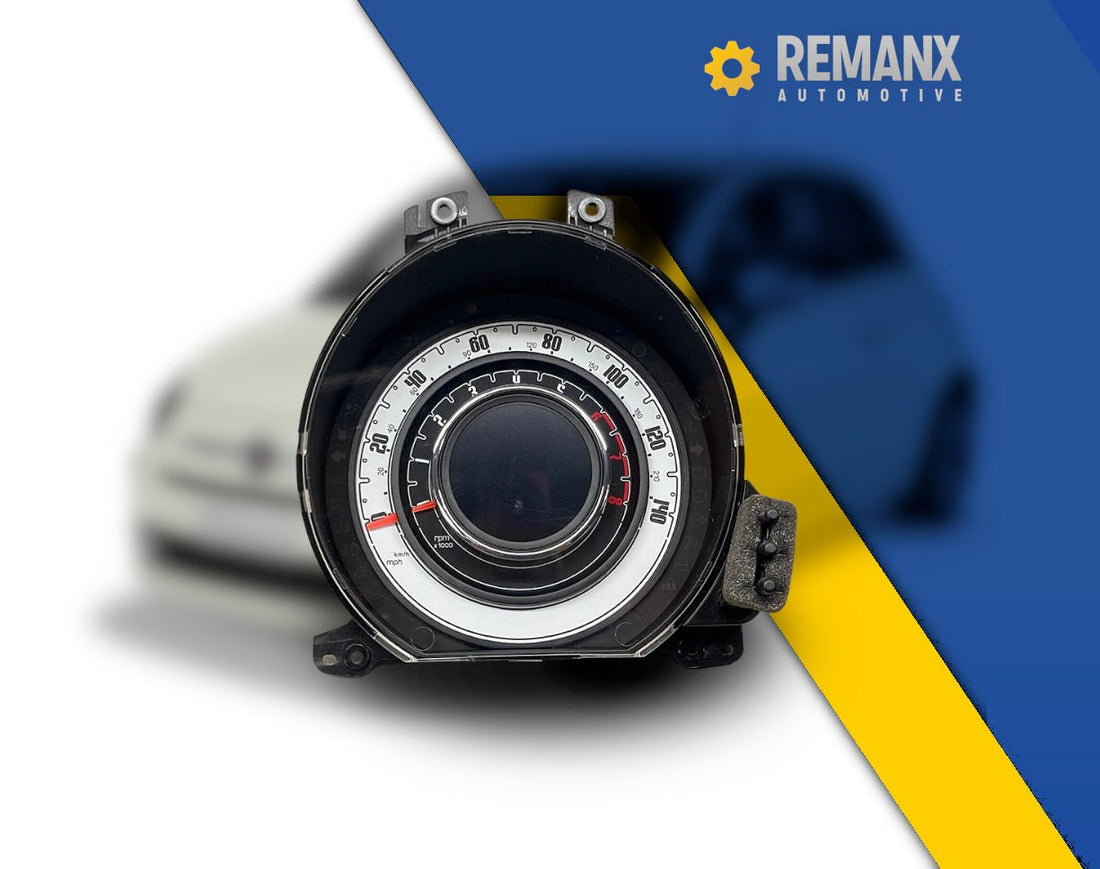In the modern automotive landscape, the Fiat 500 stands as an iconic symbol of compact, stylish urban mobility. This charming little vehicle boasts an impressive array of features, including an instrument cluster that provides essential information to drivers. However, like all intricate systems, instrument clusters can experience issues over time. In this article, we will explore the common problems associated with the instrument cluster in the Fiat 500, shedding light on the importance of proper maintenance and the advantages of opting for remanufacturing over outright replacement.
Understanding The Instrument Cluster
The instrument cluster serves as the informational hub of your Fiat 500, offering crucial insights into your vehicle's performance and condition. From warning lights to speedometers and fuel gauges, this cluster keeps you informed while you navigate the roads. Unfortunately, some Fiat 500 owners have encountered issues with their instrument clusters that require attention.
Common Problems You Might Encounter
Weak/Non-Lit Warning Lights: A common issue arises when warning lights appear dim or glow continuously. Some drivers have reported that these lights persist for about 10 to 20 seconds even after removing the key from the ignition. This persistence could indicate a fault within the instrument cluster.
Display Problems: The central display (LCD) within the instrument cluster showcases critical data like fuel levels, temperature readings, mileage, time, and outside temperature. However, some owners have faced problems such as a completely blank display or gibberish-like characters, rendering the information unreadable.
Defective Gauges: Another frequently observed problem is the malfunctioning of the rev and speedometers, particularly in vehicles produced from 2017 onwards. These gauges, essential for monitoring vehicle speed and engine performance, may become inaccurate or entirely non-functional.
Addressing the Issues: Remanufacturing as the Preferred Solution
When faced with instrument cluster problems, many vehicle owners assume that a full replacement is the only solution. However, opting for remanufacturing can be a more cost-effective, sustainable, and efficient choice. Remanufacturing retains all the original memory, eliminating the need for re-coding and ensuring seamless integration back into the vehicle.
Fiat 500's Diverse LCD Display Variations
Due to the diverse range of Fiat 500 models and variations, the LCD within the instrument cluster has undergone modifications to suit specific requirements. Consequently, multiple LCD variations are present within these clusters. This intricate design variation emphasises the importance of seeking expert assistance when addressing instrument cluster problems.
Advantages of Remanufacturing Over Replacement
Cost Savings: Remanufacturing offers a budget-friendly alternative to outright replacement. New instrument clusters can be costly, especially when factoring in programming and installation expenses. Remanufacturing is often more affordable without compromising quality.
Environmental Benefits: Opting for remanufacturing aligns with sustainable practices. By refurbishing existing components, fewer raw materials are consumed, reducing the environmental impact associated with manufacturing new parts.
Preservation of Original Memory: Remanufacturing ensures that all original memory and data are retained. This means no re-coding is necessary, saving time and resources during the reinstallation process.
Addressing Common Questions and Concerns
Does a Replacement Instrument Cluster Need to Be Programmed?
When purchasing a brand new or second-hand cluster, yes, a replacement cluster typically requires programming to synchronize with the vehicle's systems. In some cases, a second-hand instrument cluster cannot be reprogrammed to fit another vehicle.
Will Replacing the Instrument Cluster Change Mileage?
Yes, mileage adjustments might be necessary when replacing the cluster, potentially leading to discrepancies. This is another reason why remanufacturing is a more favourable solution.
How Much Does It Cost to Replace an Instrument Cluster?
The cost can vary depending on the model, but when installing a new one, you must also incorporate the price of programming and potential mileage adjustments.
Is Changing an Instrument Cluster Difficult?
Replacing an instrument cluster can be quite straightforward regarding removal and installation, as most do not require the steering wheel to be removed. However, you must remember that installing a new part can become much more complex due to programming requirements and potential mileage adjustments.
Can You Just Replace the Instrument Cluster?
While possible, replacing another instrument cluster will likely require some programming to configure it to the vehicle. This is especially true when it comes to mileage, as it is typically stored within the instrument cluster itself and sometimes within other modules. Matching the mileage without conflicts is essential to prevent any tamper warnings.
Conclusion: Opting for Remanufacturing for Long-Term Value
The Fiat 500's instrument cluster, while prone to common issues, it's reassuring to know that effective solutions are available. Rather than opting for a complete replacement, the advantages of remanufacturing are hard to ignore. Not only does it save you money, but it also contributes to a more sustainable automotive industry. With remanufacturing, your Fiat 500 can regain its original functionality without the hassles of re-coding and reprogramming. If you're experiencing instrument cluster issues, consider exploring the remanufacturing services offered by Remanx. Your vehicle's performance and your peace of mind will thank you.


1 comment
I have a 2014 Fiat 500 that has a problem with the car battery going flat if the car isn’t used for 24 hours.
I’ve had a auto electrician check the car and he reported a fault with the speedometer/instrument cluster.
Could this be true?